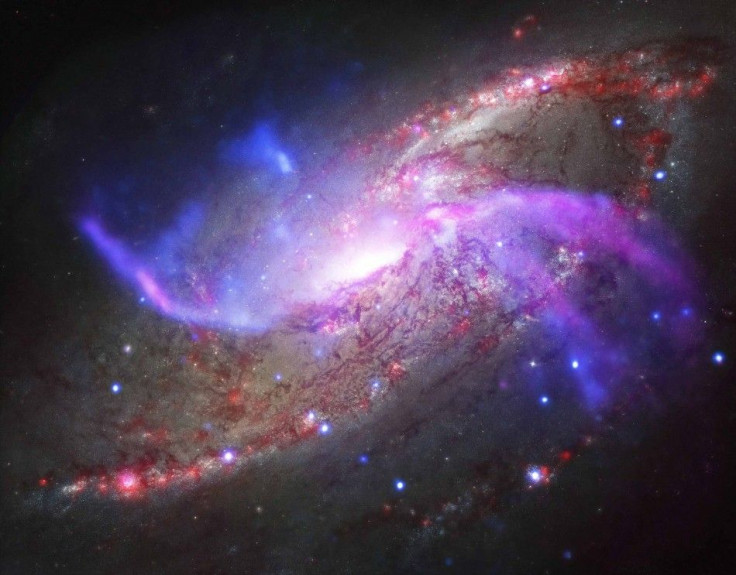The Best View Of Collision Of Two Ancient Galaxies Stitched Together By Astronomers

Telescopes like the Hubble Space Telescope, the Atacama Large Millimeter/submillimeter Array, the Keck Observatory and the Karl Jansky Very Large Array, along with a chance cosmic alignment is the reason for it.
Lead author of the study, Hugo Messias from the Universidad de Concepión in Chile and the Centro de Astronomia e Astrofísica da Universidade de Lisboa in Portugal, said that their ability to see detail is majorly because of the natural lenses created by the universe.
A rare cosmic alignment happens when an intervening lens, either a galaxy or a galaxy cluster, appear to bend and magnify the distant light, playing visual tricks. This effect is known as gravitational lensing that helps the astronomers to learn about objects that are not visible, otherwise, and helps them compare galaxies that are seen when the universe was much younger.
The object named H-ATLAS J142935.3-002836 by the researchers was initially seen in the Herschel Astrophysical Terahertz Large Area Survey through visible light pictures, though it was very faint.
The images from Hubble and Keck show that the foreground galaxy is a spiral galaxy and that the large dust of the galaxy covers a part of the background light. The ALMA and VLA have the ability to observe the sky at a longer wavelength without being affected by dust.
The combined data was used to discover the ongoing collision between the two galaxies that is also known to resemble a closer system called the Antennae galaxies which have spent a few million years as a whirl. The similarity between the two suggested the collision and ALMA's images confirmed it.
ALMA detects emission from carbon monoxide which helps it to investigate the absorption along the line of sight, allowing the astronomers the chance to measure the velocity of the gas of the object, confirming that it is an ongoing galactic collision.
Director of Science from the European Southern Observatory, Rob Ivison, said that ALMA helped them with information about the velocity of the gas in the galaxies which makes it easy to confirm that it is a galaxy merger.




















